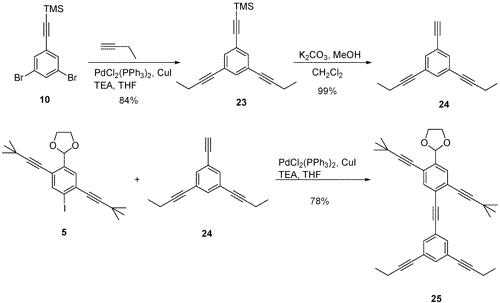Of course, chemists are also known for their sense of humor when it comes to naming their molecules (maybe after sniffing a little too much solvent?). Take, for example, arsole, a ring shaped molecule that is the arsenic equivalent of pyrrole. Or how about bastardane, cummingtonite, dickite, traumatic acid, fucitol, erotic acid, godnose, diabolic acid, vaginatin, and moronic acid.
In that vein, today's paper is a little older, but it is one that I have always found to be creative, funny, and thought provoking. In 2003, James Tour and Stephanie Chanteau, from Rice University’s Institute for Nanoscale Science and Technology, published a paper in The Journal of Organic Chemistry where they used their knowledge of chemical synthesis to create the NanoPutians. To get a little more serious, the idea was actually part of the chemistry education program at Rice University aimed at introducing organic chemistry and nanotechnology to young students.
NanoPutians are 2-nm-tall anthropomorphic molecules in monomeric, dimeric, and polymeric form. Put simply, they are people shaped molecules synthesized using a string of chemical reactions. Tour and Chanteau went as far as creating the life cycle of the NanoPution from NanoKid to NanoProfessional. Let's meet the family:
The NanoToddler
This, the smallest of the NanoPutians, has the upper and lower body synthesized separately and then catalyzed by palladium and copper compounds.
The NanoKid
The NanoToddler has grown up a little bit, with longer legs. The NanoKid was chosen as the basic skeletion for the later, professional stages of the NanoPutians. There is also a version of the NanoKid with thiol feet, in protected form, to be used as surface adhesion molecules (not shown here).
The NanoProfessionals
NanoKids grow up to be adults, and adults have a wide array of jobs. When NanoKid is treated with a series of 1,2- or 1,3-diols in the presence of catalytic acid and microwave oven-irradiation the acetal that makes up the head changes. These acetal exchanges give a series of new NanoPutians, termed NanoProfessionals.
The NanoBalletDancer
Some NanoProfessionals are so unique as to warrant special attention. NanoBalletDancers are part of this group. They must be synthesized from scratch rather than from the NanoKid progenitor. The upper and lower body must be synthesized separately and then combined after.
The NanoPutian Family Chain
Finally, the family comes together into an extended hand-holding chain using an AB-polymer.
You can learn more about the NanoPutians and their synthesis by reading the original paper:
You can also go over to the Nanokids website for a more educational, kid-friendly look at these anthropogenic molecules.






3 comments:
The next step would be to synthesise a NanoDancer that has multiple conformational isomers of the arms and legs!
That's a creative idea! Obviously, a follow-up study of isomers and extentions of the family tree are necessary.
How to clean lawn mower carburetor
Post a Comment